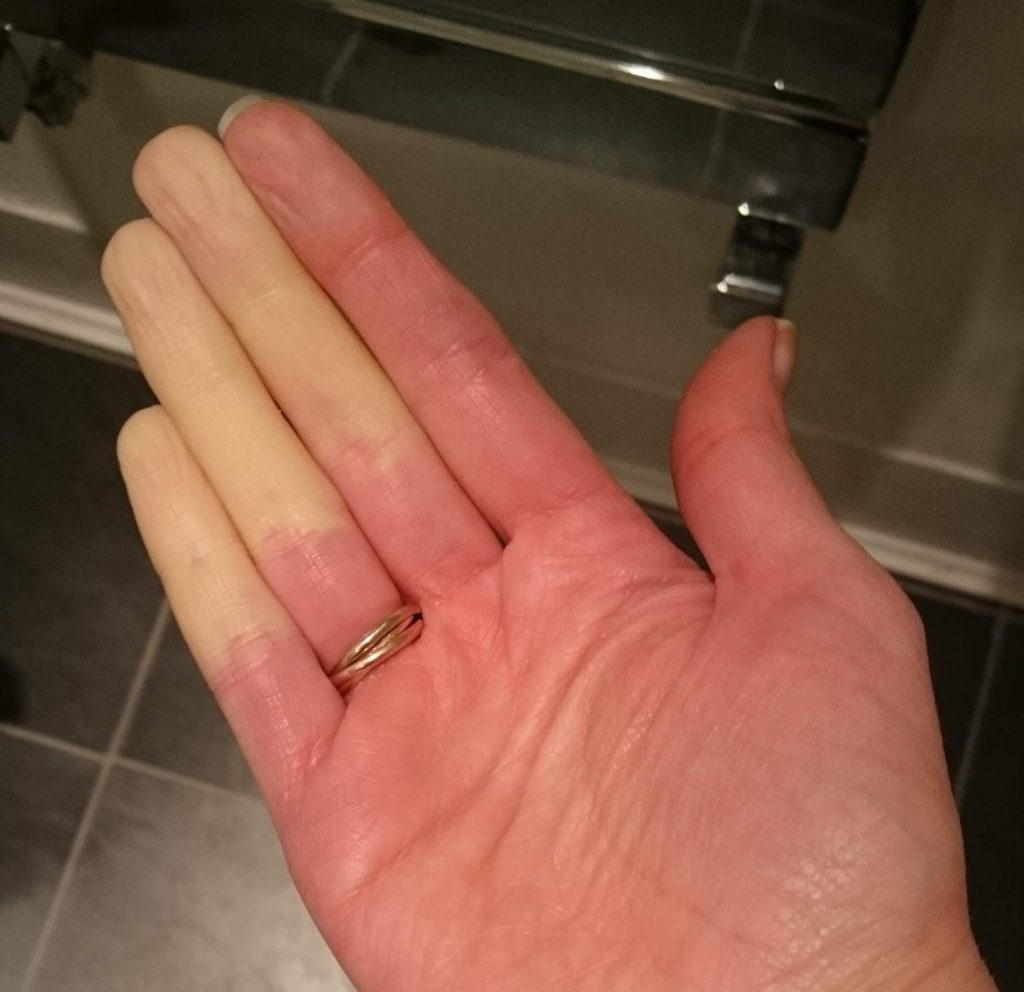
February is Raynaud’s Awareness Month. So what is it, and what are the symptoms? Consultant Rheumatologist Dr Shilpa Selvan from The Holly, takes a closer look.
What is Raynaud’s?
Most people feel the cold in their extremities – their fingertips, toes and feet – especially around this time of the year. But people with Raynaud’s (pronounced ray-nodes) phenomenon are extremely sensitive to changes in temperature, the cold and sometimes stress. The condition affects blood circulation, causing some areas of the body, such as fingers and toes, to feel numb or freezing cold in response.
Often triggered by cold weather, Storms Dennis and Ciara will have exacerbated the symptoms for Raynaud’s sufferers across the UK. In more extreme cases, Raynaud’s also affects the nose and ears. “Fingers or toes become numb and painful and change colour, blue or white, then turn bright red on rewarming,” says Dr Selvan.
Picture credit: Fiona Lyons/SRUK
What are the symptoms?
Raynaud’s mainly affects hands and feet. If you have Raynaud’s, your hands may change colour when the temperature changes and there may be pain, tingling and numbness. Other symptoms include:
• Colour changes in the affected area to white, then blue and then red,
• Numbness, tingling or pain in the fingers and toes,
• Stinging or throbbing pain upon warming or stress relief.
The condition is most common in young women aged 15-30 years old. Around one in 10 people with primary Raynaud’s go on to develop an autoimmune condition, according to Scleroderma & Raynauds UK (SRUK).
“Symptoms can last from a few minutes to several hours and can be triggered by ordinary, everyday tasks such as taking something out of the fridge. Some people have long gaps between ‘Raynaud’s attacks’ while others may have one or more attacks every day”, says Dr Selvan.
If you have any of the symptoms, it could be Raynaud’s. You can take SRUK’s simple online test at www.sruk.co.uk/testme
Who does it affect?
Raynaud’s is a common, but little understood, condition which affects up to 10 million people in the UK – eight million of these are women. It’s most likely to start in the 20s and 30s. Raynaud’s is common in teenagers, often presenting around puberty. Symptoms do seem to improve with age– this may be down to treatment, adjustment in lifestyle or hormonal changes, especially in adolescence.
Babies and young children can also develop Raynaud’s, although it is rare. For many young children diagnosed with Raynaud’s, it is little more than a nuisance. But as it isn’t a common disease at this stage in life, it is always best to ask your doctor for further tests to rule out an underlying cause.
“Raynaud’s can really be quite a debilitating condition. Some people with the condition can find it mildly uncomfortable but many others endure prolonged periods of pain, affecting their ability to carry out ordinary daily tasks such as buttoning a coat or unzipping a purse,” says Dr Selvan.
What is the difference between Primary and Secondary Raynaud’s?
People showing symptoms of primary Raynaud’s usually find the condition to be mild and are able to manage the symptoms. They usually have no other complications, and only occasionally go on to develop a related problem. In Secondary Raynaud’s however, there is often an associated medical condition causing the problem. The 300,000 people who have secondary Raynaud’s can experience severe attacks and damage to the skin of the extremities, including ulcers or sores. They are more likely to have symptoms throughout the year. People with Secondary Raynaud’s may develop other features of an underlying autoimmune condition such as systemic sclerosis (scleroderma), lupus or myositis (muscle inflammation).
Managing the symptoms
While there is currently no cure for Raynaud’s, the condition can be managed. Practical tips include wearing thick gloves and layering up before heading out during cold weather. There is also evidence for Ginko Biloba which is a herbal remedy in the management of this condition. Stress can also make symptoms worse so taking up mindfulness or yoga can be beneficial. Smoking can trigger symptoms, so people with nicotine habits are advised to seek help in quitting.
Despite the prevalence of Raynaud’s there are still a lot of unknowns about the condition. SRUK are currently funding a research project at Leeds University that is looking into the link between those with Raynaud’s who are at risk of developing scleroderma.
Scleroderma & Raynaud’s UK (SRUK) is the only UK Charity dedicated to improving the lives of people with scleroderma and Raynaud’s phenomenon. Further information can be found on their website at www.sruk.co.uk
 Dr Selvan is a renowned rheumatology specialist and has published in several peer-reviewed journals. She has also presented at national and international rheumatology conferences.
Dr Selvan is a renowned rheumatology specialist and has published in several peer-reviewed journals. She has also presented at national and international rheumatology conferences.
You can book an appointment to see Dr Selvan at The Holly Private Hospital by calling 020 3925 1782.
More information: www.theholly.com/consultant/dr-shilpa-selvan/